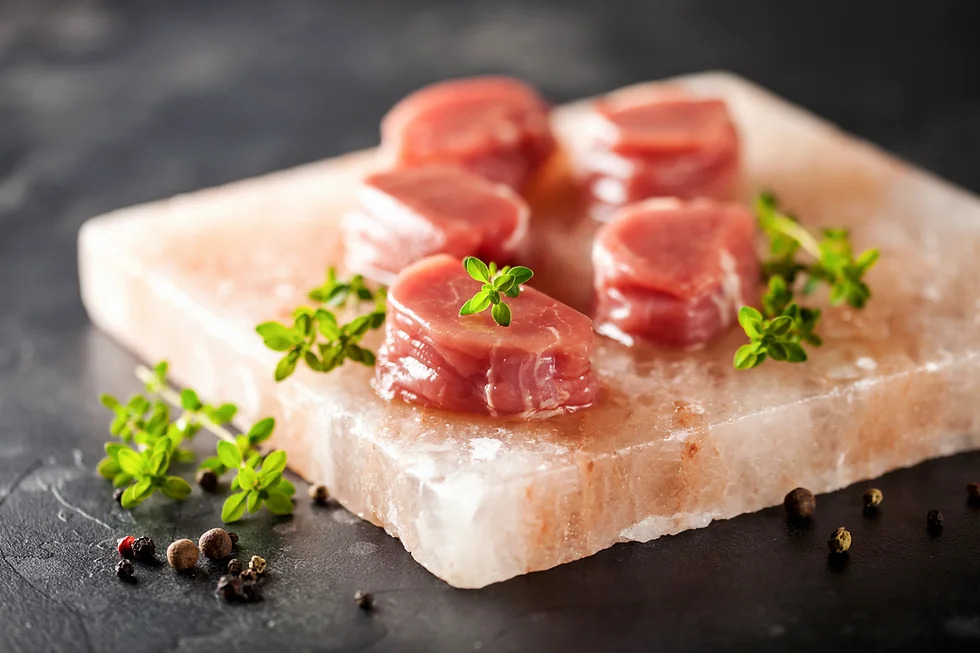In the world of culinary innovation, new techniques and tools are always emerging. One captivating trend that’s gaining popularity is the use of salt cooking blocks. These blocks, mined from the Himalayan mountains, not only make for visually appealing serving platters but also add a subtle, intricate flavor to dishes. In this article, we’ll delve into the culinary practice of utilizing Himalayan Salt blocks, covering topics like choosing the right block, mastering cooking skills, and caring for your salt slab.
Choosing the Right Block
- Quality Matters: Ensure you select a pure, top-quality Himalayan Salt block, free from additives or impurities, to enhance the taste of your meals.
- Size and Thickness: Opt for thicker, larger blocks (at least 1.5 inches thick) for even heat dispersion and durability during cooking.
- Color Variation: The color of the block (ranging from light pink to dark red) is purely aesthetic and doesn’t affect its cooking properties.
Getting Your Salt Block Ready
- Tempering: Gradually raise the temperature of the salt block on a cold stovetop or grill to prevent cracking, a process known as tempering.
- Pre-Heating: Enhance flavor by heating the block on a grill or oven for an hour before cooking, ensuring prolonged heat retention.
Techniques for Cooking
- Grilling: Heat the salt block gradually on the grill before cooking thinly sliced vegetables, seafood, or meats directly on its surface.
- Searing: Achieve a caramelized crust by searing scallops, steaks, or other proteins on the scorching hot salt block.
- Chilling: Use the salt block as a platter for cold dishes by cooling it in the fridge before displaying ceviche, sushi, or chilled starters.
- Baking: Utilize the salt block in the oven as a cooking surface for bread, cookies, or pizza to impart a delicate flavor and achieve a crunchy crust.
Flavor Infusion
- Enhancing Natural Flavors: Allow the salt block to accentuate the natural flavors of your ingredients without overpowering them, experimenting with various foods to find the perfect combination.
Caring for Your Salt Block
- Cleaning: Let the block cool completely before gently removing food remnants with a brush or spatula, avoiding water to prevent dissolution.
- Maintenance: Use a moist cloth for stubborn stains or odors, avoiding soap to preserve the block’s flavor. Air-dry thoroughly before storing in a cool, dry place away from direct sunlight and extreme temperatures.
Safety Precautions
- Handling with Care: Avoid sudden temperature changes and handle the block carefully, especially when hot and heavy after cooking.
Conclusion
Incorporating Himalayan Salt blocks into your culinary adventures involves choosing the right block, mastering cooking techniques, and proper maintenance. Whether grilling, searing, chilling, or baking, these salt blocks add a unique flavor to dishes, elevating your cooking experience. With proper care, your Himalayan Salt block can become an indispensable tool in your kitchen, enhancing your culinary skills and delighting taste buds with each meal. Embark on this flavorful journey and let the ancient Himalayan Salt enrich your cooking escapades.


